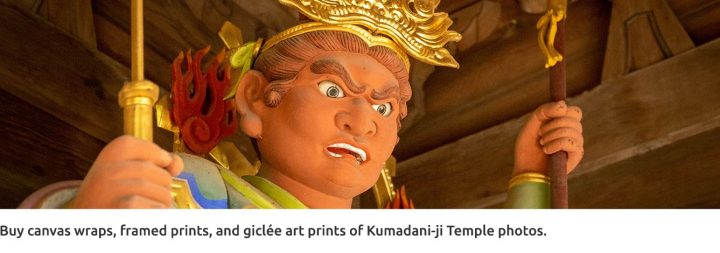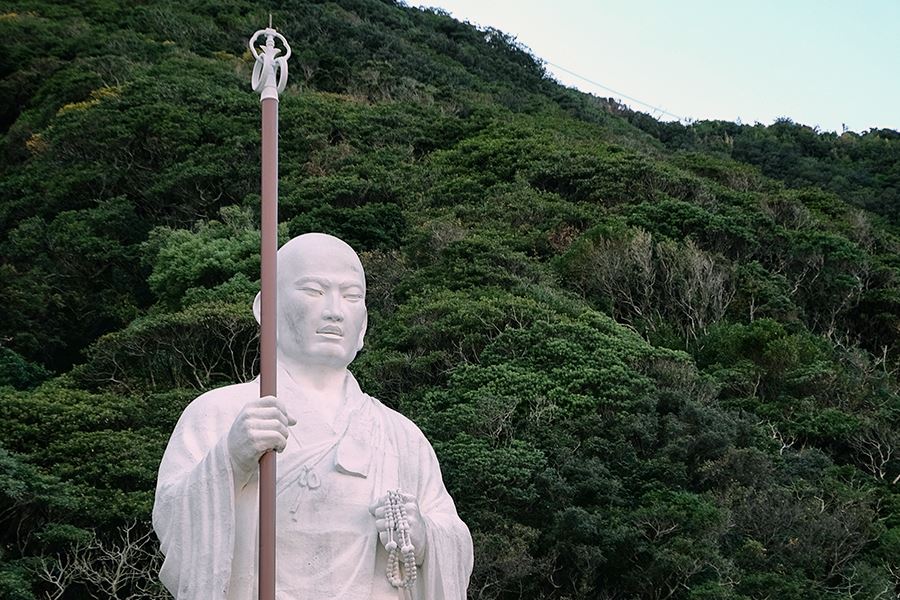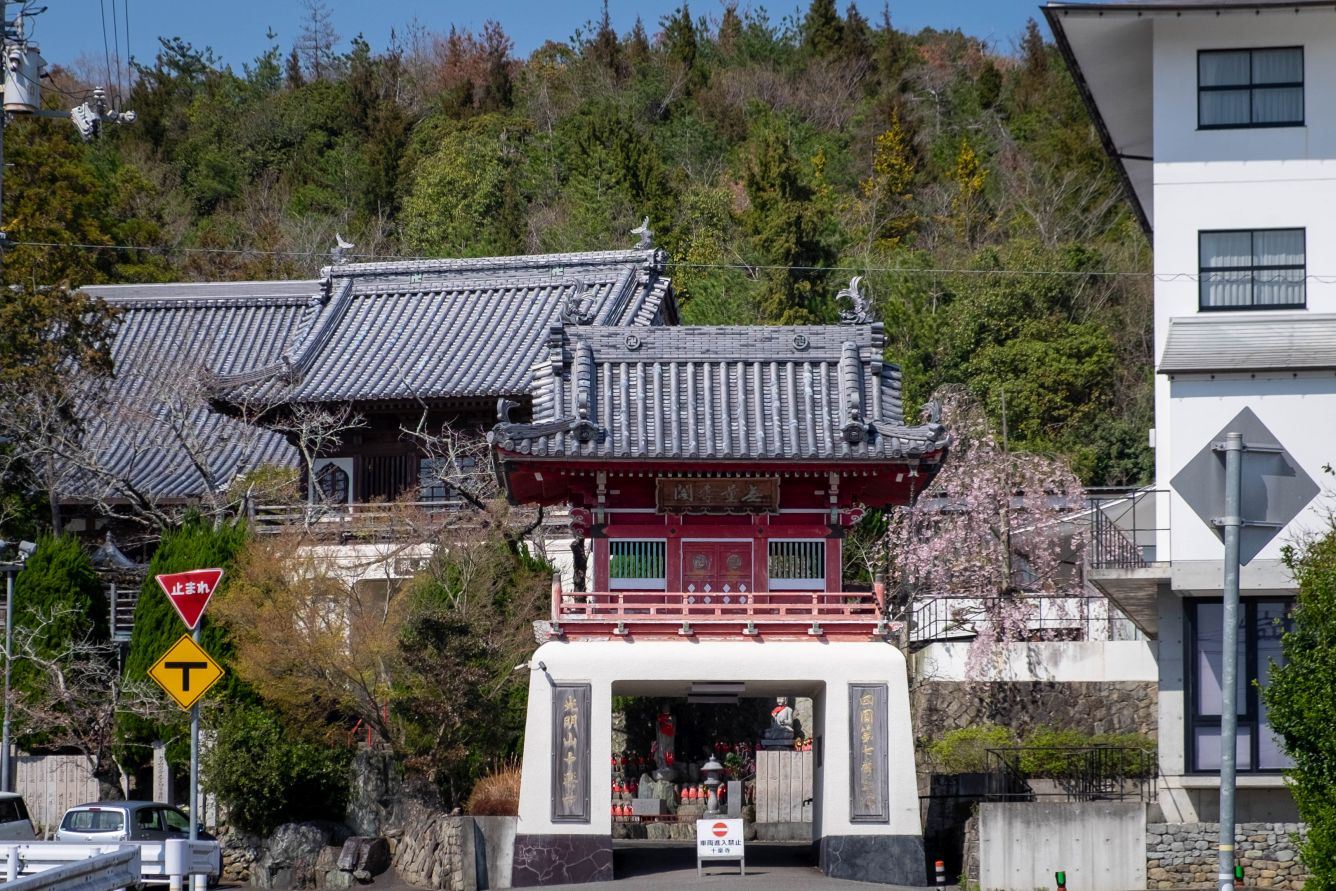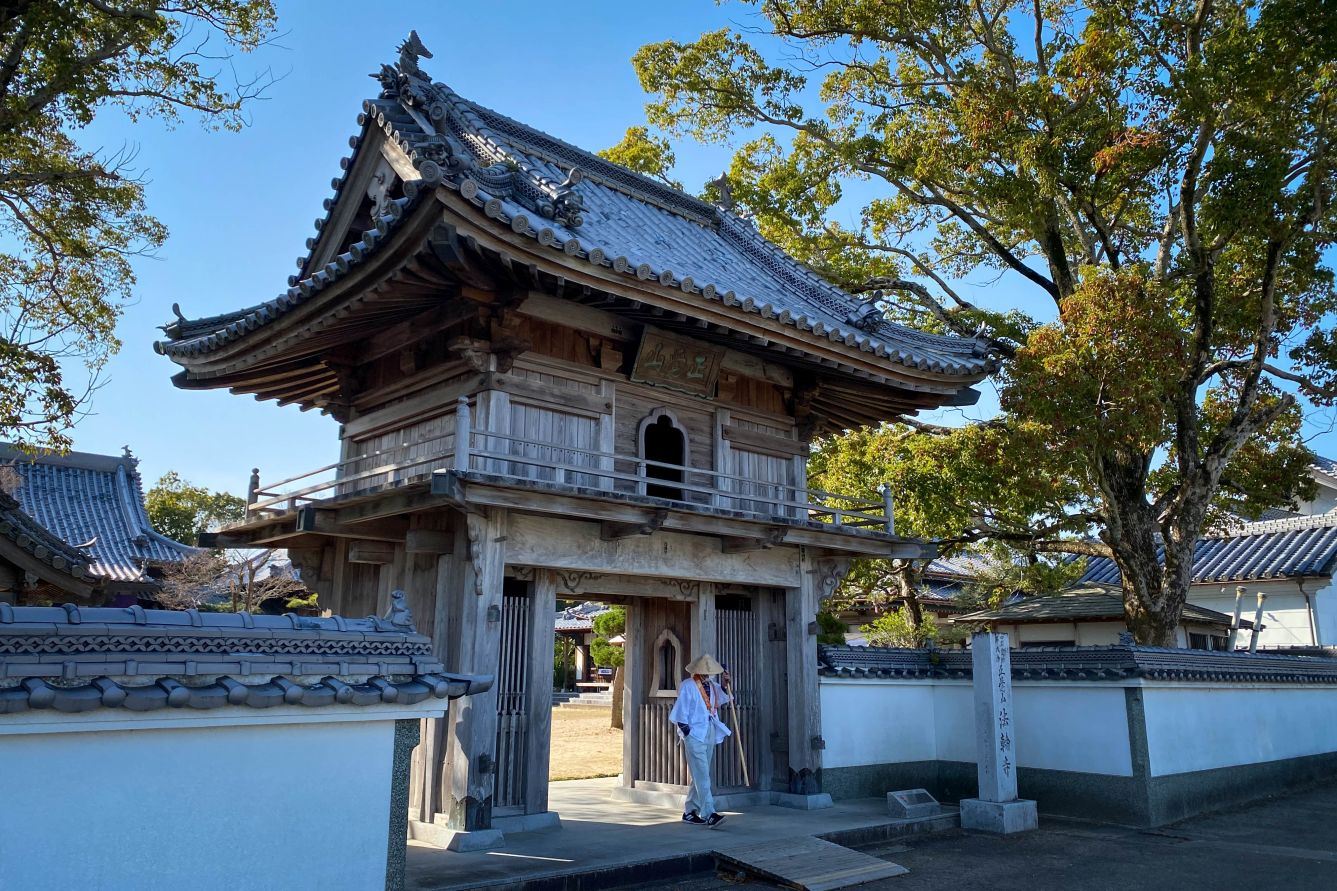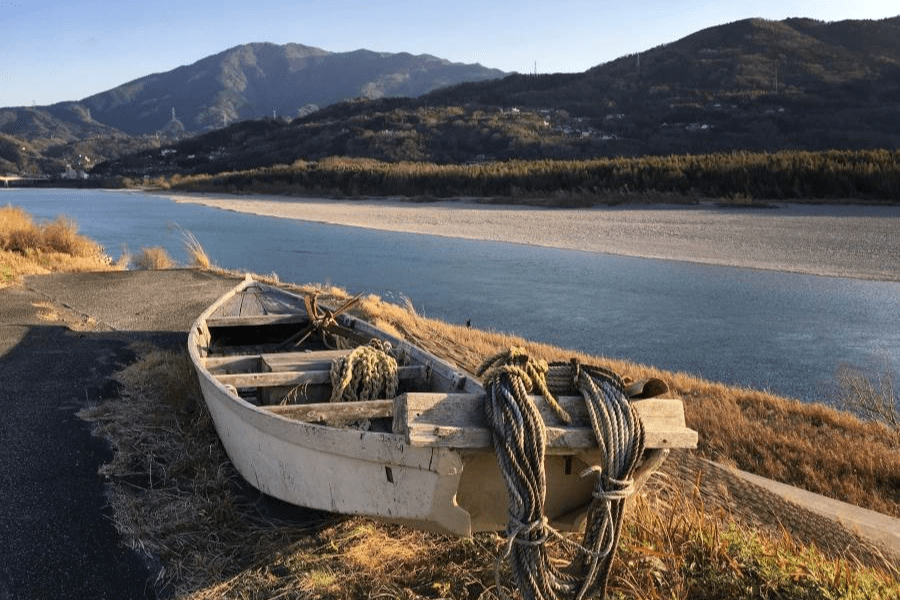Temple 8, Kumadani-ji
Home » Temple 08, Kumadani-ji
Temple 8, Kumadani-ji
Kumadani-ji is temple No. 8 on the Shikoku pilgrimage, or Henro. It stands in a valley of the Sanuki Mountains in the Tokushima rift valley.
What to see
The Niō Gate is the biggest of all the 88 temples. The towering gate stands alone in fields on a narrow road, separate from the main compound of the temple. The gate was built in 1687 mixing the Japanese and Tang Chinese styles. It’s 9 m wide and 12.3 m high. The guardians are red with billowing white clothing.
Across the road from the gate is the main part of the temple. To the left is a walled enclosure with a raked stone garden and the priest’s quarters, behind which is the temple office and a car park. To the right is a large pond. A short, curved bridge goes to an island with a shrine to Benzaiten, where women pray for easy childbirth. The road heads into a narrow valley past a stone torii and Shintō shrine.
To the left is a two-storey pagoda built in 1774. From here, a paved pathway lined with rhododendron bushes and stone pillars leads up to another imposing gate, with guardians in beautifully painted Chinese-style armour.
Beyond the gate is a plaza with a washbasin on the right and a belfry tower on the left. In front of you is the Main Hall, and up 36 steps is the Daishi Hall built in 1707.
History
Kumadani-ji was founded in 815 by Kūkai. The sitting statue of Kūkai in the Daishi Hall was made during the Muromachi period. On at least one occasion the feudal lord of Awa Province was known to have visited this temple with his warriors during the Edo period for a moon-viewing party. It’s believed the temple suffered several fires in the mid Edo period. In 1689, Jakuhon wrote in his guide to the pilgrimage, “The precincts are clean, the valley is deep, the water is cool, and you can gaze over the southern sea. There are 126 grains of the Buddha’s ashes in the hair of the Thousand-Armed Kannon statue.”
The main hall and the principal image carved by Kūkai were lost in a fire in 1927. After that, the main hall was rebuilt in 1940 by the efforts of successive priests, but the construction was interrupted in the Second World War. Finally, in 1946, the whole temple was completed, and the consecration ceremony for the newly made principal image was held.
Legends
Kūkai undertook ascetic training in this area, and he witnessed the appearance of the god of Kumano in Kīshū, today’s Wakayama. The god gave Kūkai a small gold statue and flew away. Kūkai built a temple here, enshrining the gold statue within a life-size statue of Thousand-Armed Kannon that he carved from a sacred tree.
Information
Name in Japanese: 熊谷寺
Pronunciation: kumadaniji
Address: 185 Maeda, Donari, Donaricho, Awa, Tokushima 771-1506
Related Tours

Experience the most beautiful and interesting temples of the Shikoku Pilgrimage in seven days.

A tour for families or friends, staying in the most characterful kominka and ryokan of Shikoku.

Visit the most beautiful and interesting temples of the Shikoku Pilgrimage and walk the toughest trails.
